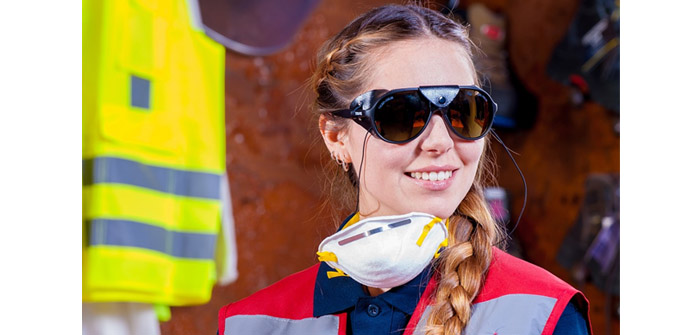https://cdn.pixabay.com/photo/2016/09/01/15/16/industrial-1636370_960_720.jpg
There are many reasons why employers should protect their employees from inhaling toxic air. As far as the health of the employees are concerned, employers must make their workplaces clean and provide ample ventilation.
By having healthy workers, employers will be able to increase productivity and improve the overall health of their employees. This will ultimately result in their retention and long-term productivity. In this article, we’re going to share with you some helpful tips on ensuring a good quality of air within the workplace.
What are some common air pollutants in the workplace?
Smoking areas
Office buildings may designate smoking areas, typically some distance from the building entrance as required by law. However, smokers returning to work will still have nicotine particles clinging to their hair, skin, and clothes.
Not every place has designated smoking laws though, and in fact twelve U.S. states have no smoking bans whatsoever related to public areas. If you’re worried about secondhand smoke affecting employees or patrons, such as in a restaurant with a smoker’s section, you can use an air purifier to keep smoke out. We’ll talk a bit more about air purifiers further down.
Laser printers
Laser printers are one of the most common sources of workplace pollution. Researchers at the Technology University of Queensland in Brisbane, Australia, determined that laser printers emit enormous numbers of ultrafine particles, according to a study published by Scientific American.
Carpets and furniture
Have you ever wondered when the tapestry was last thoroughly cleaned? Many people wear their shoes on their office carpets, which can bring all kinds of pollen and allergies inside. These allergens, along with dust, are embedded in the carpet, making breathing difficult. This technique can also be used on reinforced chairs and sofas.
Building construction materials
Office buildings are seemingly always under construction or renovations. Whether the building materials are in your office or on the floor below, a significant amount of dangerous pollutants might end up in the air you breathe.
Asbestos is a fibrous mineral that has been found in construction materials for years, such as floor tiles, insulation, and other commodities, and which, if disturbed, can break apart and release tiny fibers into the air.
VOCs in cleaning products
Most workplaces have a building cleaning service that comes in to empty garbage cans and do other minor cleaning tasks at the end of the day. Volatile organic compounds (VOCs) have been identified in cleaning products used on a regular basis.
Tips to reduce air pollution in the workplace
Invest in an air purifier
When placed in the most frequently used parts of the house, these devices, particularly ion purifiers, can help you catch some of the irritants that can cause your symptoms. You won’t be able to fully eliminate allergies, but you can help to reduce their severity and ease their symptoms. You may also effectively remove smoke from your home using an air purifier.
The thick, random fiber patterns utilized in high-efficiency Particulate Air (HEPA) filters to collect airborne particles from moving air. HEPA filters use the physics of airborne particles to remove particles from the air stream. HEPA filters are now available for nearly every air purifier on the market, and they are simple to operate while yet being highly efficient.
Ionizers purify the air by releasing ion charges that attract positive contaminants (cations), which are attracted to surfaces such as ceilings, walls, and furniture and leave the air. The ionizers help to purify the air.
Many popular air purifiers use ionizing technology as a standard feature. Negative ionization is another name for it. According to a study, ionizers can help to restrict the development of potentially hazardous molds and germs in sterile environments like dentistry clinics and hospitals.
Deck exhaust fans in combination with a dehumidifier can help prevent mold growth in moist areas like bathrooms. Make sure the bathroom, which might be a mold source, is well-ventilated, and scrub out any visible mold on the walls or fixtures.
Have your air ducts regularly cleaned
Make sure you change the filters on your HVAC system on a regular basis. Dust and other airborne irritants may be captured and not recirculated throughout your workplace using electrostatic filters.
In the basement, you may have an outdoor work area with carpeted floors. Dust that has been kicked up during work may settle on the carpet and create a carpeting-dust mix that gets trapped beneath the carpet. The more frequently you clean and dry the basement carpeting, the better the chances of preventing a carpeting-dust mix.





